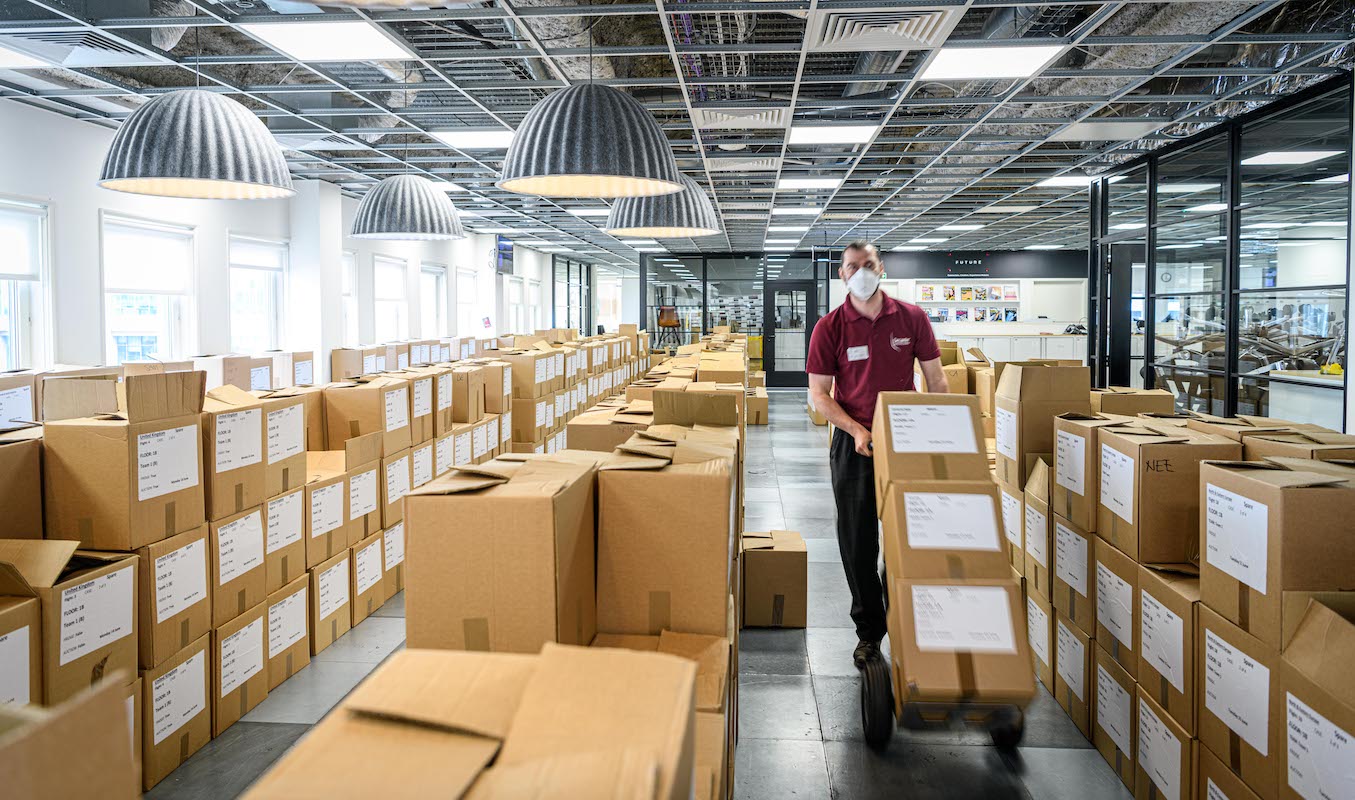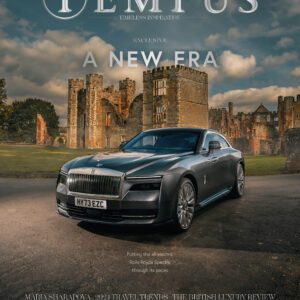This website uses cookies so that we can provide you with the best user experience possible. Cookie information is stored in your browser and performs functions such as recognising you when you return to our website and helping our team to understand which sections of the website you find most interesting and useful.
Serious business: behind the scenes at the Decanter World Wine Awards 2021
By Gabriel Power | 6 July 2021 | Food & Drink
With over 18,000 bottles of wine judged by more than 160 expert judges, the world’s largest wine competition invites Tempus for a look behind the curtain
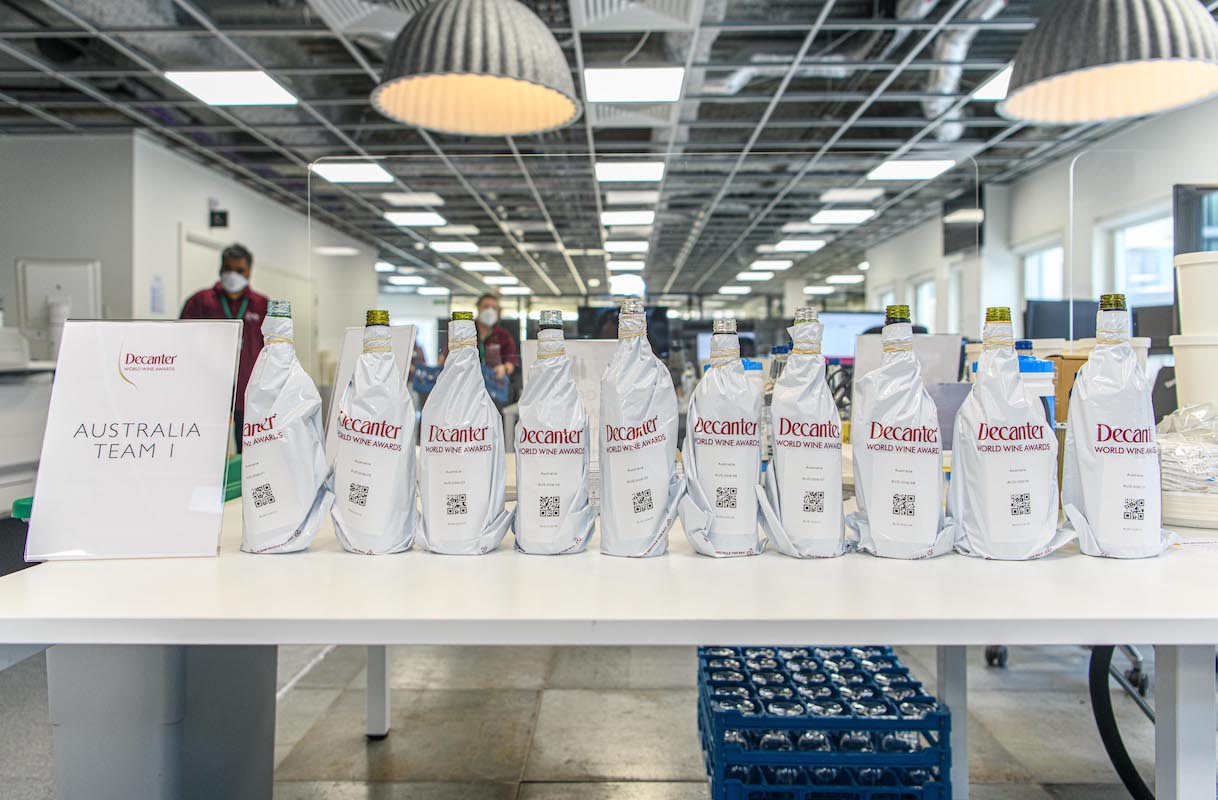
For even the most avid amateur oenophiles, a trip to the supermarket to pick up a bottle of wine can often be a gruelling undertaking. Which vintage do we want? Is this a dry or sweet red? Which grapes are used in the blend? Is this wine worth the money? If I have guests will they like this style? The inquisitive, uncertain internal monologue that comes with simply making a choice can make a consumer’s head spin.
In times of such strife, we may look for a sign from elsewhere to help guide us in our quest. No, not from a higher power, but from a series of small stickers plopped front and centre on some of the bottles in our eyeline; some bronze, some silver, some gold and even the occasional platinum. These mysterious stickers, which every wine enthusiast is likely to have noted during a browse through the booze aisle, are the work of wine magazine Decanter and their World Wine Awards, the 18th edition of which took place in London between 14 – 23 June
With results expected on 7July, this enormous, highly secretive ceremony is effectively the Academy Awards of wine, where the finest examples from across the globe are adjudicated by an army of the industry’s foremost experts – and this week, Tempus was invited behind the scenes to see how it all works.
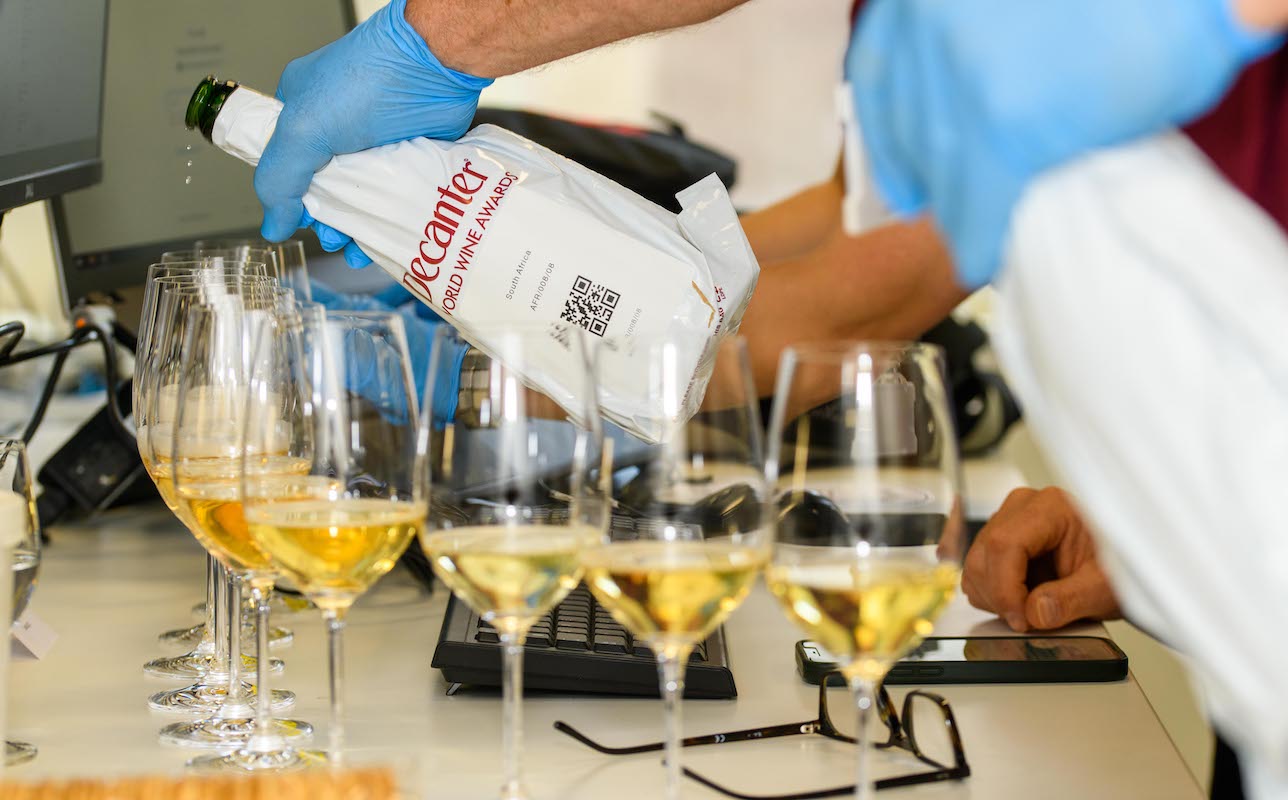
The largest wine awards in the world, the Decanter World Wine Awards are an astonishing undertaking. Trucks come and go at all hours of the day from the Canary Wharf offices of the magazine’s publisher, Future, where a mind-boggling range of 18,000 premium wines from all corners of the planet are stored, sorted into flights, packaged up so as to not reveal their identity, and presented to over 160 judges.
But that’s not where we begin our visit. As press invitees, we find ourselves being whisked up to the third floor and led through an enormous swinging double door emblazoned with the words “NO JUDGES ALLOWED”. This gargantuan space, permeated by intense air conditioning mimicking a wine cellar, is the preparation room, in which thousands of bottles of wine are sorted, opened and decanted before being shipped downstairs to the judges. Wines are first sorted into categories based on their country or region of origin, before then being stratified into subcategories based on their flavour profile and style.
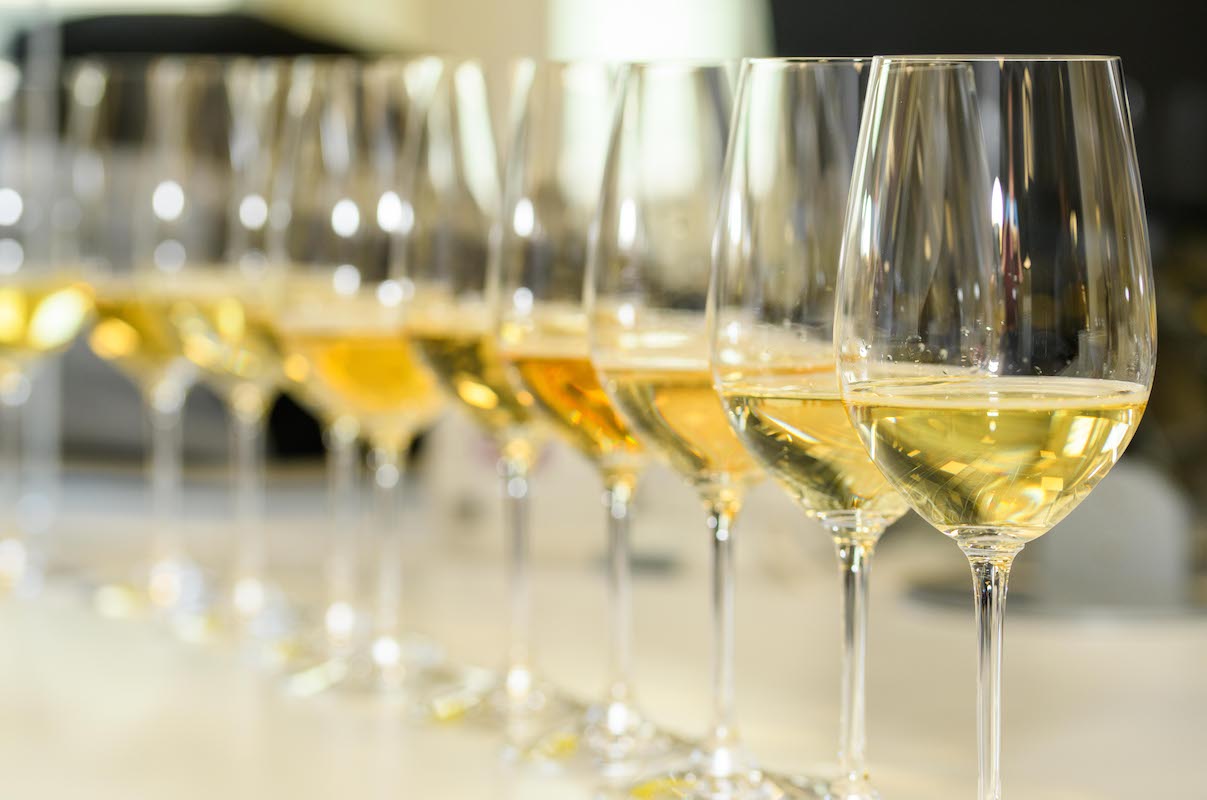
The wines are wrapped in uniform Decanter packaging and placed, six at a time, in colour-coded boxes that determine the day on which they will be judged. Workers scuttle back and forth across the wooden floor, clipboards in hand, picking out certain boxes and directing their colleagues back across the uncorking table to prepare them for tasting.
As I begin to pontificate on the frankly ludicrous amount of time and effort that must be spent going through this routine for every one of the 18,000 wines available, we are subsequently informed that each producer actually sends in four separate samples of each wine they have submitted to the competition, bringing the total number of bottles in this unassuming office in the Docklands to around 70,000. To call it a gargantuan undertaking in comparison to rival award ceremonies would be an understatement.
As we gawp at the sheer size of the operation, enormous trolleys of boxes stacked five-high whizzing in and out of view, we follow one marked “Argentina and rest of South America” out of the preparation room and head down to the hushed but strangely electric judging floor.
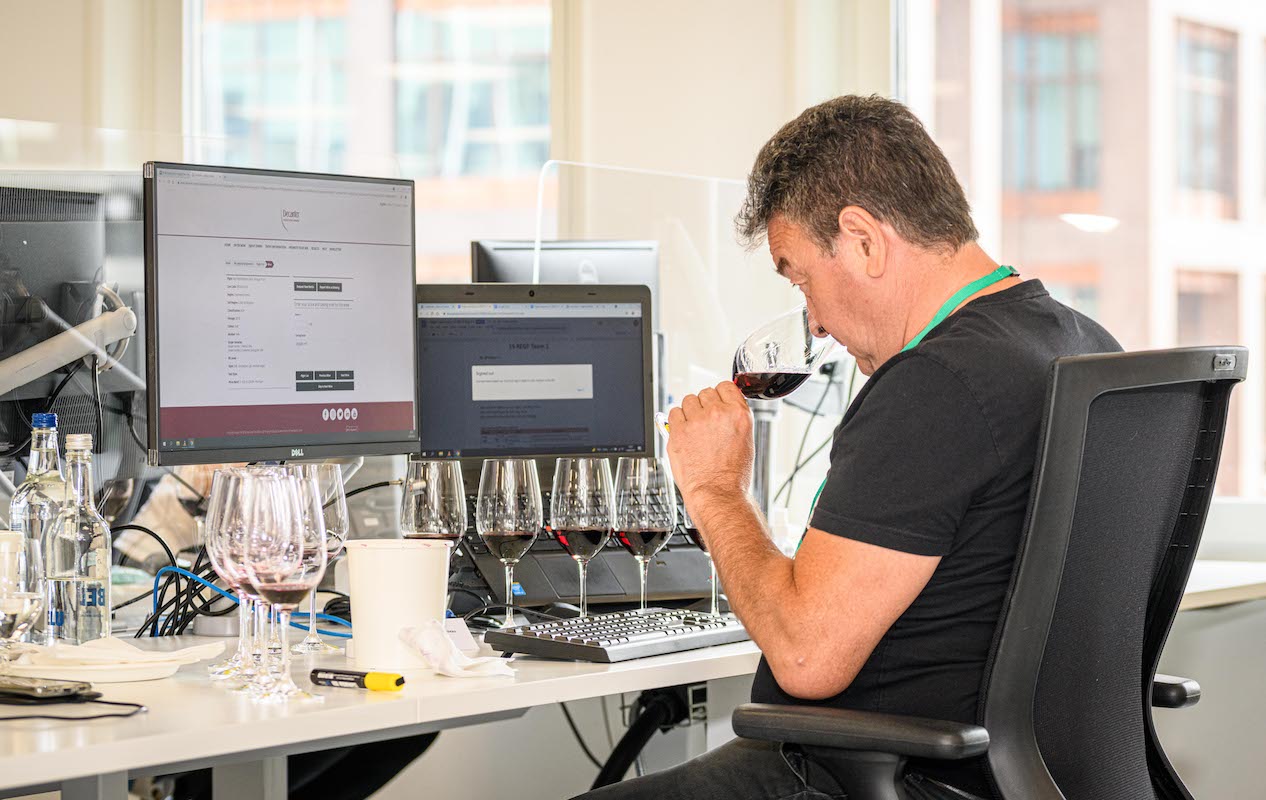
The judging floor is essentially a large open-plan office space, with a vast array of wine experts from across the world set up with desk spaces, multiple flatscreen monitors and ergonomic chairs. What sets it apart from your average workplace, however, is the copious amount of wine being shunted back and forth across the floor, with begloved workers going from table to table pouring out samples for the ultra-focused judges.
Looking up at me only briefly to determine who has crashed their tasting, the judges are sat in almost total silence, each one entranced by the splashes of wine in front of them. They sniff, they swirl, they sniff again. They carefully place their glass down and write a veritable essay in their notebooks. And while an outsider might consider it sacrilege, after finally taking a sip and washing it around their mouths, they spit it back out into a cardboard soup bowl full of a highly absorbent powder for later incineration. Not only is this necessary for Covid-19 precautions, but these judges are usually tasting upwards of 100 wines per day.
The glimpses we get of the process are mostly superficial; the judges and workers are either sworn to secrecy or as in-the-dark as we are, and thus can't divulge much detailed information about how they determine the quality of a wine. Even from this unique vantage point behind the curtain, the World Wine Awards are as shrouded in mystery as they might appear to an outsider. What we do learn, however, is that the individual judges will sort the wines into the gold, silver and bronze categories, which correspond to a 100-point scoring system used by Decanter and many top wine critics around the world. These are 86-89 for bronze, 90-94 for silver and 95-96 for gold.
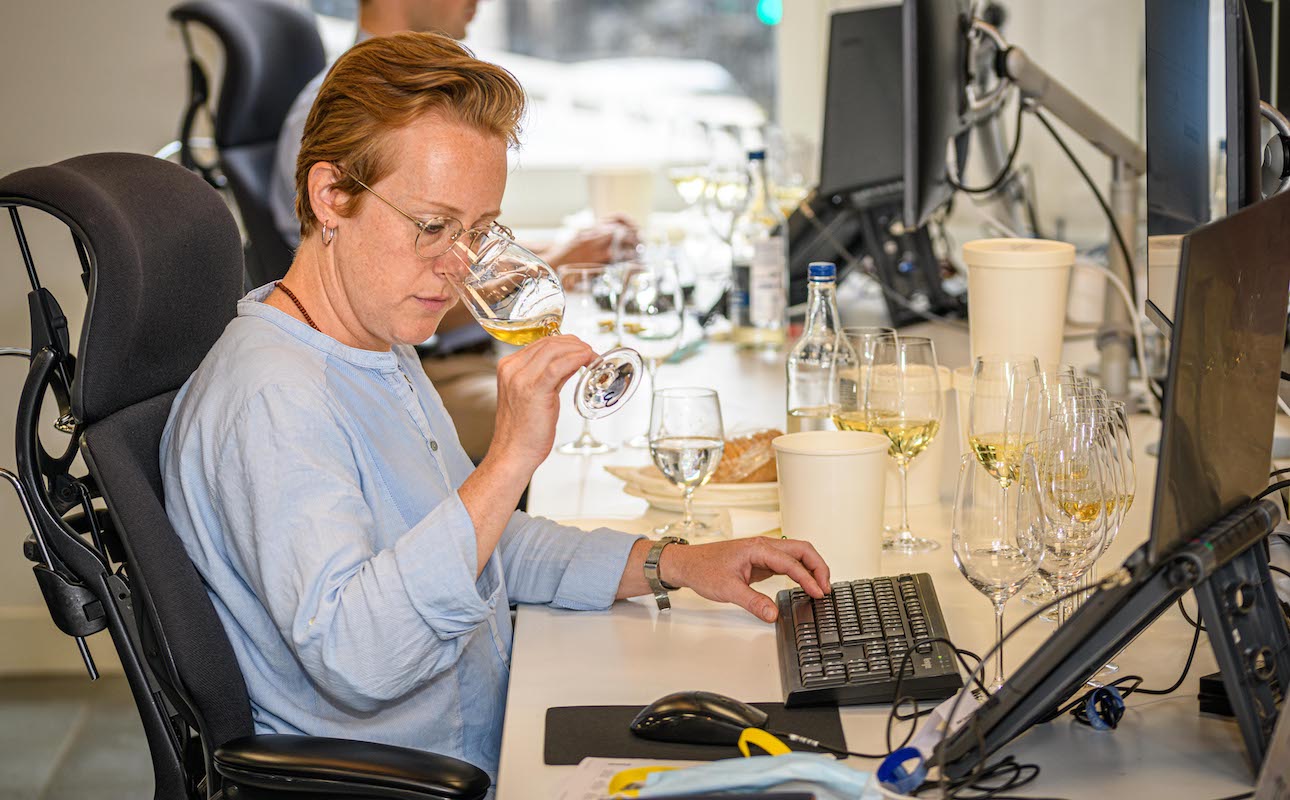
Samples deemed to have fallen in the gold category in these preliminary rounds will then be sent to the desk of one of the awards' three co-chairs – industry leading experts and Master Sommeliers – who will then have a final say on their status. These three overseers – Ronan Sayburn, Sarah Jane Evans and Andrew Jefford – have the option to confirm the wines' gold certifications, demote them to a lower rank or request further consultation with the other two co-chairs for those they are unsure about.
Read our interview with Ronan Sayburn about his role as Decanter World Wine Awards 2021 co-chair here.
Of course, those with a keen eye will likely have already spotted that the gold category only contains wines that have received a score of up to 96/100 – so where do the magical wines with 97 and up end up? Once the main judging process is over and the main cohort of judges heads home, the three co-chairs get together with a number of other regional chairs to root out those wines they feel are deserving of the coveted platinum certification. Yet even this is not the highest honour a wine can receive at the awards, with only 50 of the best-of-the-best platinums once again being singled out for an extremely exclusive "best in show" award.
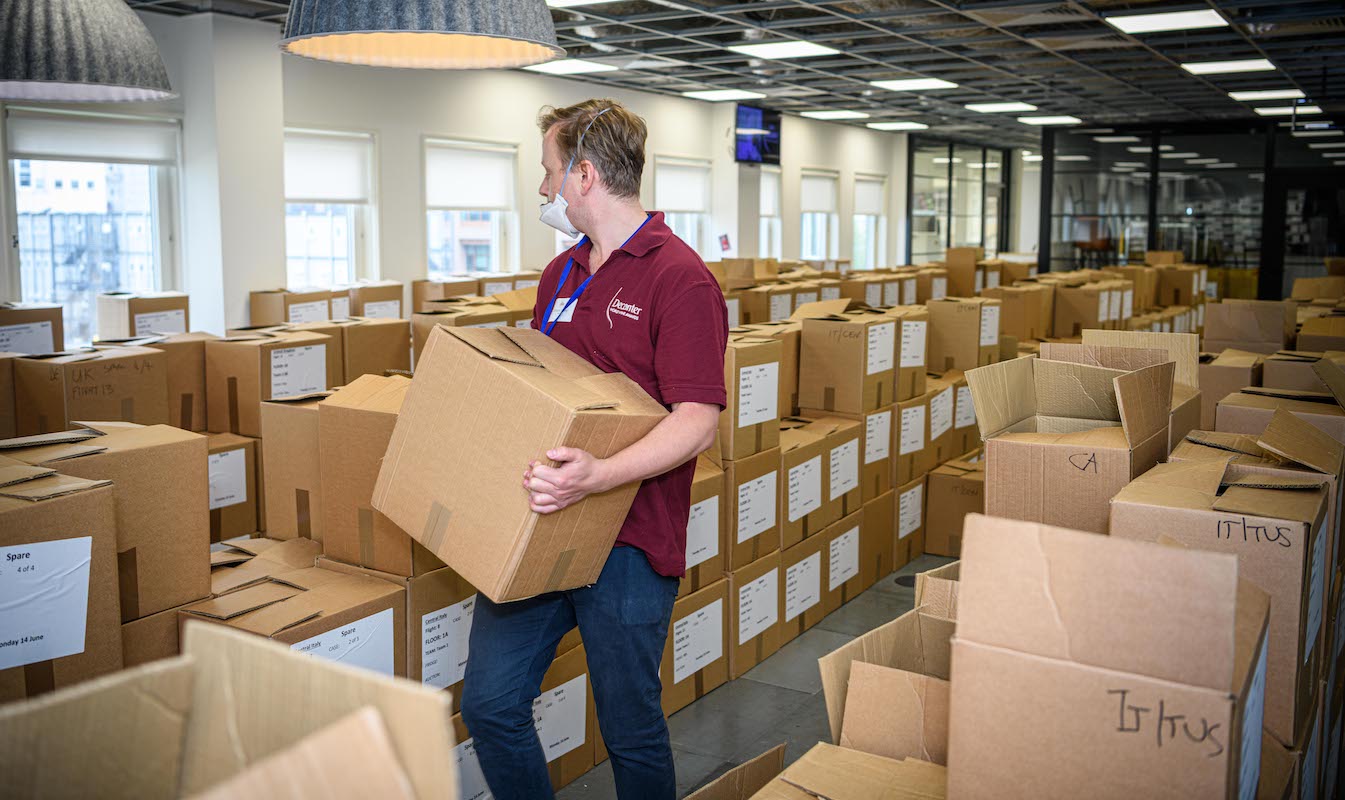
The Decanter World Wine Awards are a fascinating and rather surprising example of just how serious the business of wine judging truly is. Be it the extreme secrecy with which we had been led around the building or the extensive recycling facility in the basement – all glass is crushed and converted into new bottles within 30 days of use at the awards – this is a mammoth undertaking that has harnessed the blood, sweat and tears of some of the world's foremost wine experts.
So next time you spot a shimmering sticker clinging to the side of a zinfandel or a pinot grigio, you'll not only be able to inform those around you of what it means, but you will acknowledge as a real mark of quality.
